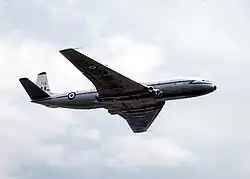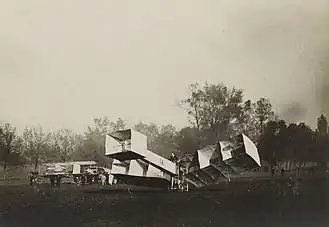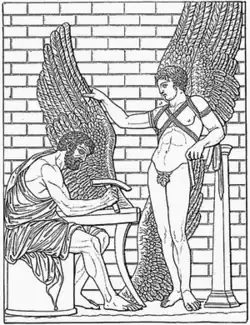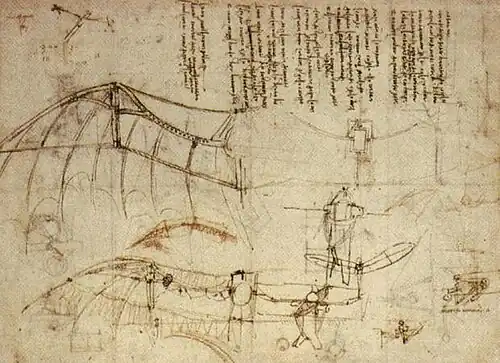Portal:Aviation
| Categories & Main topics |
|
Tasks and Projects |
The Aviation Portal

Aviation includes the activities surrounding mechanical flight and the aircraft industry. Aircraft include fixed-wing and rotary-wing types, morphable wings, wing-less lifting bodies, as well as lighter-than-air aircraft such as hot air balloons and airships.
Aviation began in the 18th century with the development of the hot air balloon, an apparatus capable of atmospheric displacement through buoyancy. Clément Ader built the "Ader Éole" in France and made an uncontrolled, powered hop in 1890. This was the first powered aircraft, although it did not achieve controlled flight. Some of the most significant advancements in aviation technology came with the controlled gliding flying of Otto Lilienthal in 1896. A major leap followed with the construction of the Wright Flyer, the first powered airplane by the Wright brothers in the early 1900s.
Since that time, aviation has been technologically revolutionized by the introduction of the jet engine which enabled aviation to become a major form of transport throughout the world. In 2024, there were 9.5 billion passengers worldwide according to the ICAO. As of 2018, estimates suggest that 11% of the world's population traveled by air, with up to 4% taking international flights. (Full article...)
Selected article

Selected image
Did you know
...that after the Red Baron, French ace René Fonck had the most confirmed World War I aerial victories? ... that the Air Zoo in Kalamazoo, Michigan houses the only SR-71B Blackbird in existence? .. that five UH-1 Iroquois helicopters of the Experimental Military Unit were shot down by a single Viet Cong soldier armed with an AK-47 rifle?
General images -
In the news
- May 29: Austrian Airlines cancels Moscow-bound flight after Russia refuses a reroute outside Belarusian airspace
- August 8: Passenger flight crashes upon landing at Calicut airport in India
- June 4: Power firm helicopter strikes cables, crashes near Fairfield, California
- January 29: Former basketball player Kobe Bryant dies in helicopter crash, aged 41
- January 13: Iran admits downing Ukrainian jet, cites 'human error'
- January 10: Fire erupts in parking structure at Sola Airport, Norway
- October 27: US announces restrictions on flying to Cuba
- October 3: World War II era plane crashes in Connecticut, US, killing at least seven
- September 10: Nevada prop plane crash near Las Vegas leaves two dead, three injured
- August 6: French inventor Franky Zapata successfully crosses English Channel on jet-powered hoverboard
Related portals
Associated Wikimedia
The following Wikimedia Foundation sister projects provide more on this subject:
-
Commons
Free media repository -
Wikibooks
Free textbooks and manuals -
Wikidata
Free knowledge base -
Wikinews
Free-content news -
Wikiquote
Collection of quotations -
Wikisource
Free-content library -
Wikiversity
Free learning tools -
Wikivoyage
Free travel guide -
Wiktionary
Dictionary and thesaurus
Selected biography

Ballooning was a risky business for the pioneers. Blanchard lost consciousness on a few occasions, endured freezing temperatures and almost drowned when her balloon crashed in a marsh. In 1819, she became the first woman to be killed in an aviation accident when, during an exhibition in the Tivoli Gardens in Paris, she launched fireworks that ignited the gas in her balloon. Her craft crashed on the roof of a house and she fell to her death. She is commonly referred to as Madame Blanchard and is also known by many combinations of her maiden and married names, including Madeleine-Sophie Blanchard, Marie Madeleine-Sophie Blanchard, Marie Sophie Armant and Madeleine-Sophie Armant Blanchard.
Selected Aircraft

The Antonov An-225 Mriya (Антонов Ан-225 Мрія, NATO reporting name: Cossack) was a strategic airlift transport aircraft built by Antonov, and was the world's largest powered aircraft before its destruction in February 2022. Mriya (Мрія) means "dream" (inspiration) in Ukrainian.
With a maximum gross weight of 640,000 kg (1,400,000 lb), the An-225 was the world's heaviest aircraft. Although its wingspan is less than that of the Hughes H-4 "Spruce Goose", the latter never went beyond a single short low-altitude test flight, making the An-225 the largest aircraft in the world to take off more than once. Both the An-124 and An-225 are larger than the C-5 Galaxy, the largest aircraft in the U.S. inventory. The An-225 was also larger than the Airbus A380.
- Span: 88.40 m (291 ft 2 in)
- Length: 75.30 m n(246 ft 11 in)
- Height: 18.1 m (59.3 ft)
- Engines: 6× ZMKB Progress D-18 turbofans, 229 kN (51,600 lbf) each
- Cruising Speed: 750 km/h (400 knots, 465 mph)
- First Flight: December 21, 1988
Today in Aviation
- 2012 – Afghan insurgents fire rockets at Bagram Airfield in Afghanistan, damaging the Boeing C-17 Globemaster III of United States Chairman of the Joint Chiefs of Staff General Martin Dempsey while Dempsey is in his quarters on the base. The damage forces Dempsey to use a different aircraft when he departs Afghanistan later in the day.[1]
- 2009 – An Indian Navy British Aerospace Sea Harrier FRS.51 crashes shortly after take-off from Dabolim Airport near Goa, India. The aircraft on a routine flight crashed in to the Arabian Sea of the coast of Goa killing the pilot Lt. Cdr. Saurav Saxena.
- 1998 – A Lumbini Airways de Havilland Canada DHC-6 Twin Otter crashed in a mountainous region near Ghorepani, Nepal. All of the 18 people on board were killed.
- 1998 – An Insitu Aerosonde named Laima becomes the first UAV to cross the Atlantic Ocean, completing the flight in 26 hours.
- 1995 – Atlantic Southeast Airlines Flight 529, an Embraer EMB-120 Brasília, crashes in a field near Carrollton, Georgia in the United States, killing 10 of the 29 people on board.
- 1994 – Royal Air Maroc Flight 630, an ATR-42, is deliberately crashed into the Atlas Mountains, killing all 44 on board.
- 1989 – Unlimited class racer Rare Bear, a highly-modified Grumman F8F-2 Bearcat, sets a new piston-powered speed record of 850.24 kilometers per hour (528.32 miles per hour) at Las Vegas, Nevada.
- 1985 – Sir Freddie Laker accepts a £UK 8 million in a settlement with British Airways. Laker had sued twelve airlines for conspiring to drive Laker Airways out of business
- 1974 – First flight of the BAE Systems Hawk
- 1973 – First flight of the Aerosport Scamp
- 1967 – First flight of the Antonov An-30
- 1963 – An Aeroflot Tupolev Tu-124 ditches in the Neva river in Leningrad after engine failure; there were no fatalities among the 52 on board, but the aircraft is destroyed.
- 1961 – A Canadian Pacific Air Lines Douglas DC-8 sets two world records during a single test flight. First, it reaches 50,000 feet (15,240 m) at a weight of 107,600 pounds (48,807 kg), a new altitude record for a loaded transport jet. Then, in a dive from that altitude, it reaches Mach 1.012 with a true air speed of 662.5 mph (1,066.8 km/hr) at an altitude of 39,614 feet (12,074 m), becoming the first airliner to break the sound barrier.
- 1957 – The USAF formally cancels the XF-103 Mach 3 interceptor program
- 1956 – Flying a Vought F8U-1 Crusader fighter, U. S. Navy Commander R. W. “Duke” Windsor sets a U. S. national speed record over a 15 km (9.3 mi) course, averaging 1,015.428 mph (1,635.150 km/hr) at China Lake, California.
- 1954 – Col. Einar Axel Malmstrom, vice wing commander at Great Falls Air Force Base, Montana, is killed in the crash of a Lockheed T-33 Shooting Star trainer, 52-9630, near the base. Local citizens then urge the renaming of the facility in his honor. The base was renamed on 15 June 1956.
- 1953 – A new world’s altitude record of 83,235 feet is set by Marion Carl in the Douglas D-558-2 Skyrocket.
- 1953 – United Air Lines Flight 615, a Douglas DC-6 B with FAA registration N37550, was operating as Flight 615, which was a transcontinental east-west service serving Boston-Hartford-Cleveland-Chicago-Oakland-San Francisco. The plane was transporting 50 persons (44 passengers and 6 crew members). The flight departed Chicago at 10:59 p. m. CST en route to Oakland. At around 4:16 a. m., the plane was approaching Oakland. At this time, the pilot, Marion W. Heddin of Los Altos, had talked with the control tower of the Civil Aeronautics Administration at the airport preparing for his landing, and had mentioned no trouble. At 4:25 a. m. Flight 615 was cleared for the straight-in approach into Oakland. This was the last radio transmission received from the flight. The plane crashed into mountainous terrain 15 miles (24 km) southeast of Oakland, careening into Tolman Peak and over its knoll, scattering on the downslope and into Dry Gulch Canyon below in a fiery explosion. All 50 persons on board perished.
- 1951 – A Lockheed T-33A-1-LO Shooting Star, 49-917, of the 5th Fighter-Interceptor Squadron, 52d Fighter-Interceptor Group, crashes on take off from McGuire Air Force Base into a scrub pine forest at adjacent Fort Dix, New Jersey, killing the two crew and spraying burning fuel over a group of 54 U.S. Army soldiers assigned to B battery of the Ninth division's 26th Field Artillery Battalion, wrapping up an army communications exercise, killing 11 and injuring 20. The trainer, unable to gain altitude, clips trees at the edge of a clearing and impacts 50 feet (15 m) from an army six-by-six troop carrier vehicle upon which some soldiers had already boarded. Others were lined up in formation close by. Eight died almost instantly and three succumbed later in hospital. All Army fatalities were 22 or younger, all hailed from New York, New Jersey, and Connecticut, and all had been in the army for less than five months. Also killed were pilot Capt. William H. Raub, (also reported as William H. Rauh ) 31, of Seattle, and his passenger, Maj. Theodore Deakyne, 30, of Levittown, New York. "It was an unfortunate tragedy -- a remarkable coincidence of circumstances which brought the plane to the spot where the men were on the verge of moving out. Thirty seconds later might have made a lot of difference," Lt. Bertram Brinley, Fort Dix public information officer, said.
- 1944 – Lieutenant John M. Armitage, USNR, is killed while conducting air firing tests of a Tiny Tim rocket at the Naval Ordnance Test Station at Inyokern, California. He flew into the ground from 1,500 ft (460 m). in an Curtiss SB2C-1C Helldiver, BuNo 018248, and was killed after the launching the rocket. Accident investigators discovered that the shock wave from the rocket's blast caused a jam in the SB2C's flight controls. Airfield dedicated 30 May 1945 in his honor as Armitage Field, now part of Naval Air Weapons Station China Lake, California.
- 1944 – First flight of the Grumman F8F Bearcat.
- 1942 – Flying a Grumman F4F-4 Wildcat fighter, U. S. Marine Corps Captain John L. Smith scores the first aerial victory by a Henderson Field-based aircraft, shooting down a Mitsubishi A6M Zero between Lunga Point, Guadalcanal, and Savo Island.
- 1941 – 24 year-old Lt. Eugene M. Bradley of Antlers, Oklahoma, assigned to the 64th Pursuit Squadron. While piloting in a dogfight training drill, Lt. Bradley's P-40 crashed on August 21, 1941 at the Army Airfield, Windsor Locks, Connecticut. The airfield was renamed Army Air Base, Bradley Field, Connecticut on January 20, 1942 and is now Bradley International Airport.
- 1932 – 21-27 – 7,363 km race over Europe of the Challenge 1932 contest.
- 1927 – The first Canadian-built, modern, all metal, low wing monoplane, the Northrup Delta, was flown from the St Lawrence at Longueuil.
- 1923 – The first electric airway beacons start appearing at airfields in the United States to assist in night flying operations.
- 1918 – First flight of the Nieuport-Delage NiD 29
- 1908 – Wilbur Wright moves to Camp d’Auvours, 11 km (6.8 mi) east of Le Mans, where all his flights for the remainder of the year will be based.
- 1908 – The Antoinette II flies the first circle by a monoplane at Issy-les-Moulineaux. It lasts 1 min, 36 seconds.
References
- ^ Sieff, Kevin, "General's Plane Hit in Afghanistan," The Washington Post, August 22, 2012, p. A9.
- Shortcuts to this page: Portal:Airplanes • P:AVIA

.jpg)
.jpg)


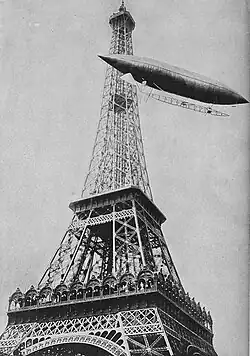
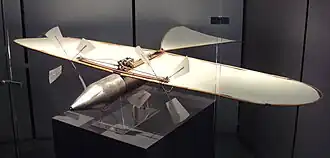

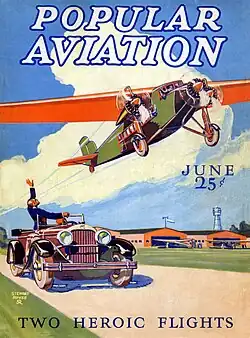
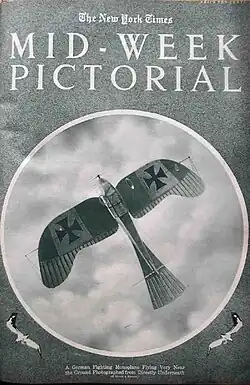



.jpg)
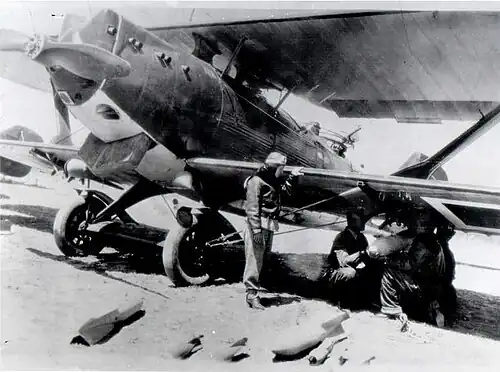

.png)
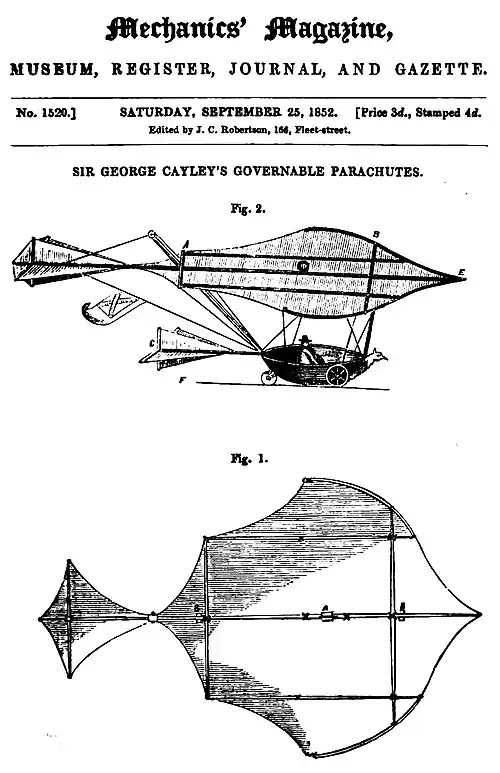
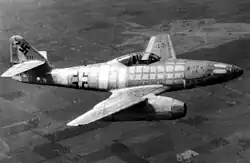



.jpg)
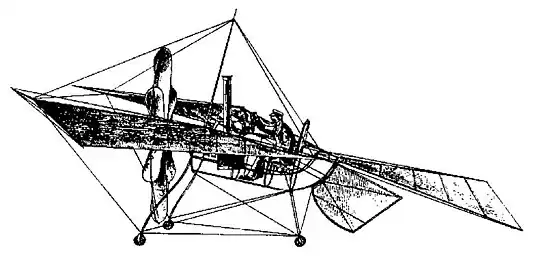

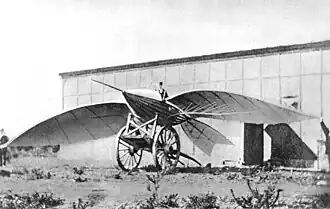
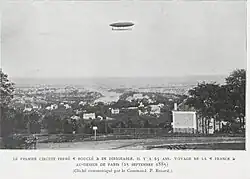

.jpg)

.jpg)

